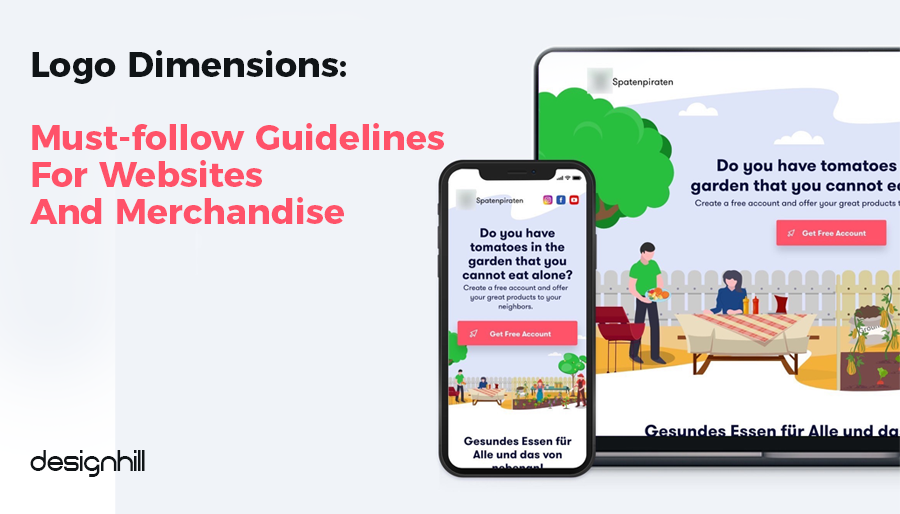A logo can make a desirable impression of your business on your target audience. You can convey many things to potential clients if your business logo is well-designed and symbolize the true version of your business. But, what logo dimensions you should follow to design a logo also matters a lot in its success. It would be best to consider the right dimensions, especially when you use your logo on the website and merchandise. In this post, we have shared the guidelines for logo dimensions that you should consider while using your logo on websites and merchandise. Have a look.
Logos can be seen everywhere. No advertisement and marketing space is today devoid of logos, as these are the symbols and identities that represent our businesses. If we look into a small business, corporate house, sports team, a non-profit organization, or government organization, all have well-crafted and designed logos.
Since logos are present on most small to large spaces, the problem of sizing up logos can crop up regularly. Like the logo dimensions you are using for your website won’t be the same for the logo crafted on your merch for sale. Therefore, the dimensions of logos are so important to keep in mind especially for designers or logo creators.
Today, logos come in very big sizes, such as on billboards. Or, they can be present as shrunken tiny little symbols within a URL bar or on a small product like a pen. But in both these scenarios, keeping the logo and its text recognizable and consistent is a problem. If you have not taken care of the dimensions problems earlier on, then it may pose many hurdles.
So, Here Are Some Guidelines To Ensure The Right Logo Dimensions
But, what exactly do we mean by logo dimensions? It is about logo sizes and dimensions. It also involves the shape and orientation of a logo. So, all the other elements, such as an icon, company name, and slogan, also are part of the dimension.
A major issue with logos is that these need to be resized and reoriented when used at various places. So, when using your logos at websites, social media sites, advertisements, and merchandise, you must resize them. It should fit in all contexts.
Then, there are various backgrounds against which a logo must merge well and adapt to any size. Still, it should be able to maintain its clarity.
Consider Design Basics
First, make sure that your design basics are in place if you want to create logos with the right dimensions for websites and merchandise. A logo design must follow the fundamentals. This means that a logo must be a versatile piece of work. It should be scalable to any big or small size. All of its design elements must be created in a balanced way, and it should have a sense of balance as well.

When you keep these fundamentals in mind, you will create a logo for different sizing contexts. When it comes to the sizing of logos, there are no exact formulas that you need to follow. All you need to do is to apply your sense of design so that a logo becomes a versatile symbol.
Here Are Some Logo Guidelines:
- Make it certain that your logo is legible even when it is blown up to bigger sizes or shrunk down to a tiny scale. Its design elements still should be visible and readable if the text is applied.
- A characteristic of such a scalable logo is its consistency across different mediums. This means that it will effectively reflect your brand voice when used across all mediums like websites, advertisements, and many more.
- Your logo must appear great in all orientations. It will leave the same impression if displayed in a horizontal, vertical, or square position.
- Also, you should pick the right file types. PDF or EPS are considered as the best options for the effective scalability of logos. So, save your logo design in vector format for resizing or reformatting purposes.
Logo Dimensions For Websites
When your target audience goes to your website, every element should look fine. But, logos for websites are the symbols of businesses. If the business logo appears distorted and disproportionate on your website, it will harm your credibility. So, make sure that your logo does appear great in all dimensions.
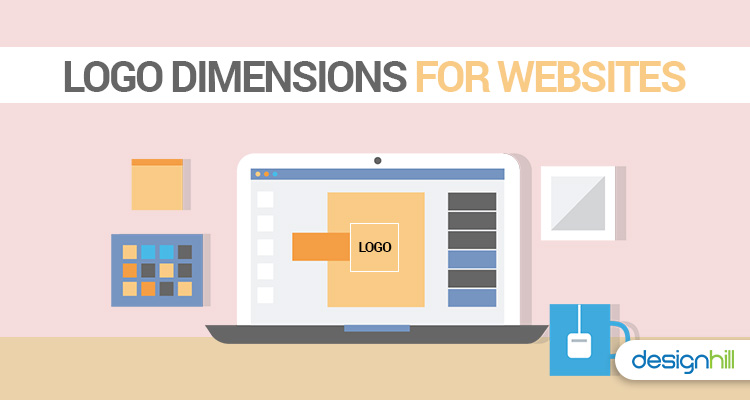
When designing a logo, consider a website’s browser. When a logo is scaled down to a tiny size, it should be scalable in a browser.
Where does a logo appear on a website?
A logo may be spotted at two places on websites. The first place where we usually see a logo on websites is the navigation bar or header. The second place for a logo on a website is the favicon, which is the icon next to the page’s title. You can see it next to your URL.
Also, note that a logo should appear as per the dimensions of an app icon. At the app sites, logos appear in tiny sizes as a minimalist image. This is because of the space constraints on the mobile screen.
Key Tips For Sizing A Logo For Website
When designing your logo, thumbnail size for Youtube, etc., you must consider some basic things to make the symbol compatible with different dimensional requirements.
First, find out if your logo gels well with your web page design. It should not look an odd image when seen against the page background.
The second consideration is that your logo should be distinguishable and recognizable in large and small formats.
Standard Favicon Sizes
A favicon [Favorite Icon] is a simple and flat version of your logo. It sits at the extreme top left side of our browser. These favicons can also be seen on your browser’s history, bookmark bar, and other places. If you use Google Chrome, favicons may also appear on your browsers’ homepage and search bar. Since it is very small in size, you should take extra care in designing your logo.
![]()
So, in a nutshell, a favicon is your brand’s identity mark, which people can see instantly on your website. It is an important icon for your brand.
The standard favicon sizes are:
- 16 x 16 pixels.
- 32 x 32 pixels.
- 48 x 48 pixels.
Website Header Sizes
Websites have navigation bars that have various buttons for visitors to take them to different useful pages. Many websites display a company logo on the left side of the navigation bar. Since the navigation bar is static, the logo is also present on every web page. This ensures a brand’s presence on all the website pages.
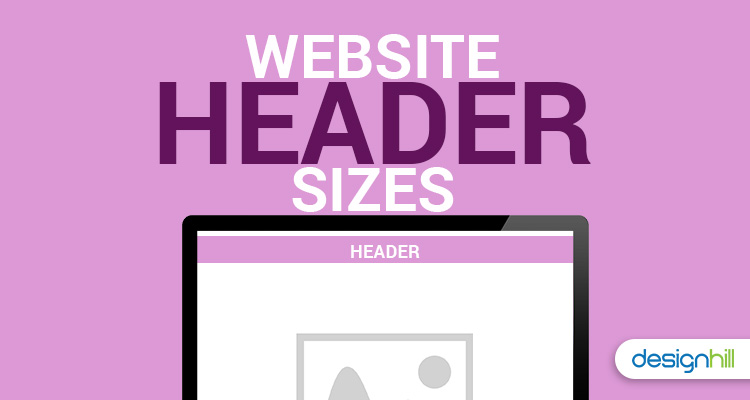
Many website builder software gives the option to add a logo at the side of the vav bar. However, the logo size for the website header will also depend on your theme and website builder.
For a website logo, the average height is typically between 20px and 30px. The width of the logo will depend on the brand’s name. Still, there are some common standard logo sizes for websites that you should consider:
- Full Banner: 468 x 60 pixels.
- Horizontal Layout:
i. 250 x 150 pixels.
ii. 350 x 75 pixels.
iii. 400 x 100 pixels. - Vertical Layout: 160 x 160 pixels.
Mobile App Icon Sizes
- iPhone 6S and up: 180 x 180 pixels.
i. 120 x 120 pixels in Spotlight Search.
ii. 87 x 87 pixels in Settings. - iPad: 152 x 152 pixels.
- Android: 192 x 192 pixels.
- Windows: 62 x 62 pixels.
So, try to create a logo that looks great on both the web and print. You can take the example of Amazon’s logo, a lowercase wordmark with a yellow arrow connecting the letters ‘’a’’ to ‘’z’’. This logo looks equally impressive on digital ads, banners, websites, and packaging designs. A reason for its versatility is that it is a simple logo design.
Logo Sizes For Social Media
Your logo will also be present as your brand identity on social media. If your business needs to make a profound impression through various social channels, your logo must look impressive on these platforms. Your logo is your brand’s major identity, and so it must look professional and impressive on all the social platforms.
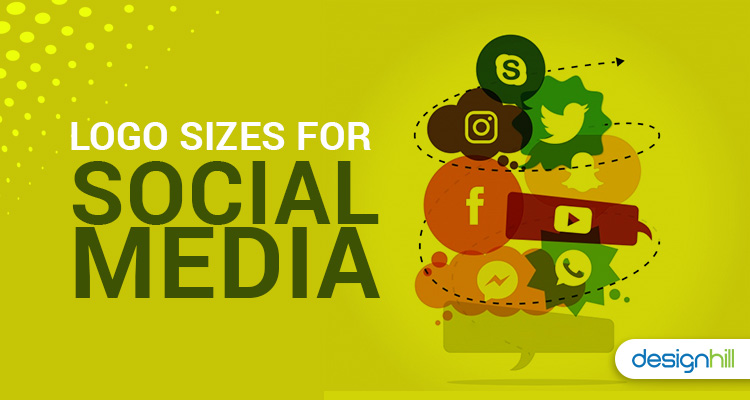
This means that your brand logo must fit well in a variety of spaces on social media. A social media platform such as Facebook and Twitter lets you display your logo in various sizes. So, you can put a logo on the cover photo, profile pictures, banners, and posts.
Note that a logo image can stand on its own when put in the avatar space. But, your logo can appear in its full glory in the cover image. However, your logo cover image can interact with your avatar.
Keep These Things In Mind While Sizing Your Brand Logo For Social Media:
- Make sure that you plan your social media avatar much ahead, and it must be part of your overall brand image.
- If the avatar space on a social platform is smaller, use the logo’s icon only.
- When creating wordmark logos, think of creating a logo’s first letter or two words.
- Your file size should be bigger to support the resolution, though smaller file sizes are also accepted.
Here Are The Logo Sizes For Social Media Platforms:
Logo Sizes For Facebook
- Profile Pictures (for personal and business pages): 180 x 180 pixels.
- Cover photo: 820 x 312 pixels.
- Shared Link Image: 1200 x 628 pixels.
Logo Sizes For Instagram
- Profile Picture: 110 x 110 pixels.
- Thumbnails: 161 x 161 pixels.
- Square Image Post: 1080 x 1080 pixels.
- Landscape Image Post: 1080 x 566 pixels.
- Portrait Image Post: 1080 x 1350 pixels.
- Stories: 1080 x 1920 pixels.
Logo Sizes For YouTube
- Profile Picture: 800 x 800 pixels.
- Thumbnail Picture: 1280 x 720 pixels.
- YouTube Channel Cover Picture: 2560 x 1440 pixels.
Logo Sizes For Twitter
- Profile Picture: 400 x 400 pixels.
- Cover Picture: 1500 x 500 pixels.
- Tweeted Images: Minimum 440 x 220 pixels, Maximum 1024 x 512 pixels.
Logo Sizes For LinkedIn
- Profile Picture: 400 x 400 pixels.
- Background Picture: 1584 x 396 pixels.
Logo Dimensions For Merchandise
If you are in the business of selling merchandise, then you are entering the realm of print media. This implies that your merchandise logo will be printed on a wide range of merchandise such as custom t-shirts, sweatshirts, hoodies, kids, and babies wear, and even on phone cases, packaging, custom mugs and a lot of other products also have logos printed on them.
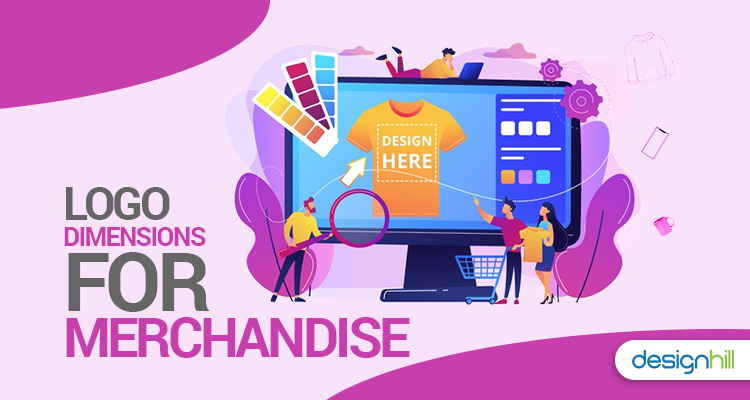
Sizes of images vary a lot across print media, though digital spaces mostly use smaller dimensions.
Here are the common standard logo sizes for brand merchandise and print. But, you may want to consider your printer while considering these sizes.
- For a mug: 8.5 x 3 inches.
- US business cards: 3.5 x 2 inches.
- For a t-shirt: 14 x 15 inches.
- Chest pockets: around 4 3/8″ x 5 3/8″.
- Sheet sizes for billboards:
i. US: 27 x 40 inches.
ii. UK: “48 sheets” which is 6.096 x 3.048 meters.
iii. France: 12 x 8 square meters. - Envelope sizes are:
i. C4 in Europe: 22.9 cm x 32.4 cm.
ii. #10 envelope: 4 1/8 x 9 ½ inches. - Letterheads:
i. A4 letter size: 210 × 297 mm.
ii. US standard letter size: 8.5 x 11 inches. - The standard coaster size is 4 x 4 inches.
Logo Dimensions For PrintShop
If you are selling merchandise on a print-on-demand site, you should follow its image dimension instructions. PrintShop by Designhill is amongst the leading POD platforms which thousands of designers and artists use.
They sell their merchandise such as t-shirts, hoodies, sweatshirts, tank tops, and other men’s and women’s fashion wear. They also sell wall art and accessories.

When selling from your online store at PrintShop, you must pay attention to the image dimensions. You may want to print your brand logo and other designs or art images on your merchandise for sales.
You will also be ordering the platform to print your design or artwork on merchandise for customers. But, you need to save a design for printing, which is about the pixels and hence resolution.
Product Dimension Requirements
You should ensure that the print quality for your artwork is the best. At Designhill PrintShop, every product that you want to sell has a set dimension. But there are certain resolution thresholds you should keep in mind.
Here Are Those Resolutions:
If the resolution is >= 120 DPI (Good Print Quality)
If the resolution is >= 75 DPI (Average Print Quality)
Make sure that your print file is of at least 150 DPI [ dot per inch], which will ascertain the best print quality.
PrintShop lets you see the effects of a design or image when you resize it. Similarly, you can gauge the design’s print quality when the site rates it as Good, Average, and Poor. So, depending on the logo or any other image size, you have an idea of how the print quality will look.
So, these are the key points you must pay heed to regard logo dimensions. Ensure that you follow these logo dimension guidelines carefully so that your logo image is compatible with the requirements of a website and merchandise.
Wrapping Up
Logos appear on a variety of spaces on digital platforms and websites. The business symbol should look impressive even when they are scaled up to big sizes or reduced to tiny sizes. Logo dimensions for websites, social media, and merchandise are different and should be followed strictly. Only then, logos and other images can appear impressive.
